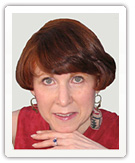e-Tips
Are We At An Awkward Stage About Age?
Whether or not 60 is the new 40, or 30 is the new 20, etc., age perceptions and realities are confusing and not aligned with perceptions and realities of decades ago. We are in need of mindset transitioning.
What defines a person’s age? How old are co-workers, employees and managers really beyond just chronological age? A thoughtful list of options on ways to define and measure members of a workforce (The Prism of Age) appears in an Executive Summary by Sloan Center on Aging and Work (March 2010).
- Chronological age – time in years since birth with connotations of age related individual human development (physical, social, emotional. Etc.)
- Career stage or Occupational age – a way of thinking about experiences that mark the accumulation of knowledge, competencies, skills and social capital related to a particular type of career or line of work
- Life Events age– an individual’s development as s/he moves through life cycle experiences (e.g. events and transitions such as marriage, birth of children)
- Generational age – the social, economic, political and cultural influences that have a sustained impact on the way large groups of people see the world and make meaning out of these experiences
- Organizational age or Tenure – the number of years an individual has been with a particular employer or the number of years the person has been in a particular job or profession
- Subjective age – an individual’s sense of his or her own age. I would include under this:
- Relative age – how old a person feels comparatively in a group setting, team
- Social age – how old “society” perceives one to be
- Physical age – relative to health impact on ability to carry out daily tasks (work and personal)
Commentary
Each of these “ages” is important and has greater or lesser relevance in different circumstances. Employers, recruiters, fundraisers, financial advisers, and individuals assessing their own situations need to be thinking more flexibly and creatively about the ramifications (plusses and minuses) of each of these types of ages and free themselves of stereotypes associated with both young and older chronological age.
Thinking about different “ages” may require re-thinking of traditional compensation progression and schemes as well as positioning and titles. This is likely to meet resistance from policy-makers who resist the pain of mapping and achieving change and rocking a boat that has buoyed their careers. Not easy, but let’s get real and mount the dialogue.
What changes in your thinking about the value of individuals and employees do these definitions provoke?
Please send your thoughts on these observations to me at pwhaserot@pdcounsel.com or comment on www.nextgeneration-nextdestination.com.
Phyllis
© Phyllis Weiss Haserot, 2011.
* The generational chronology for easy reference: Generations are defined by the similar formative influences – social, cultural, political, economic – that existed as the individuals of particular birth cohorts were in adolescent-early adult years. Given that premise, the age breakdowns for each of the four generations currently in the workplace are approximately:
Traditionalists: born 1925-1942
Baby Boomers born 1943-1962
Generation X born 1963-1978
Generation Y/Millennials born 1979-1998
Phyllis is available to speak at your organization or at firm retreats on inter-generational relations and organizational effectiveness topics. Call 212-593-1549 or e-mail pwhaserot@pdcounsel.com for a list of topics or to custom-tailor your own.
Check out *Next Generation, Next Destination*, our blog about succession, transitioning and multi-generational talent management. Visit, comment and subscribe by RSS feed or e-mail. http://www.nextgeneration-nextdestination.com.

